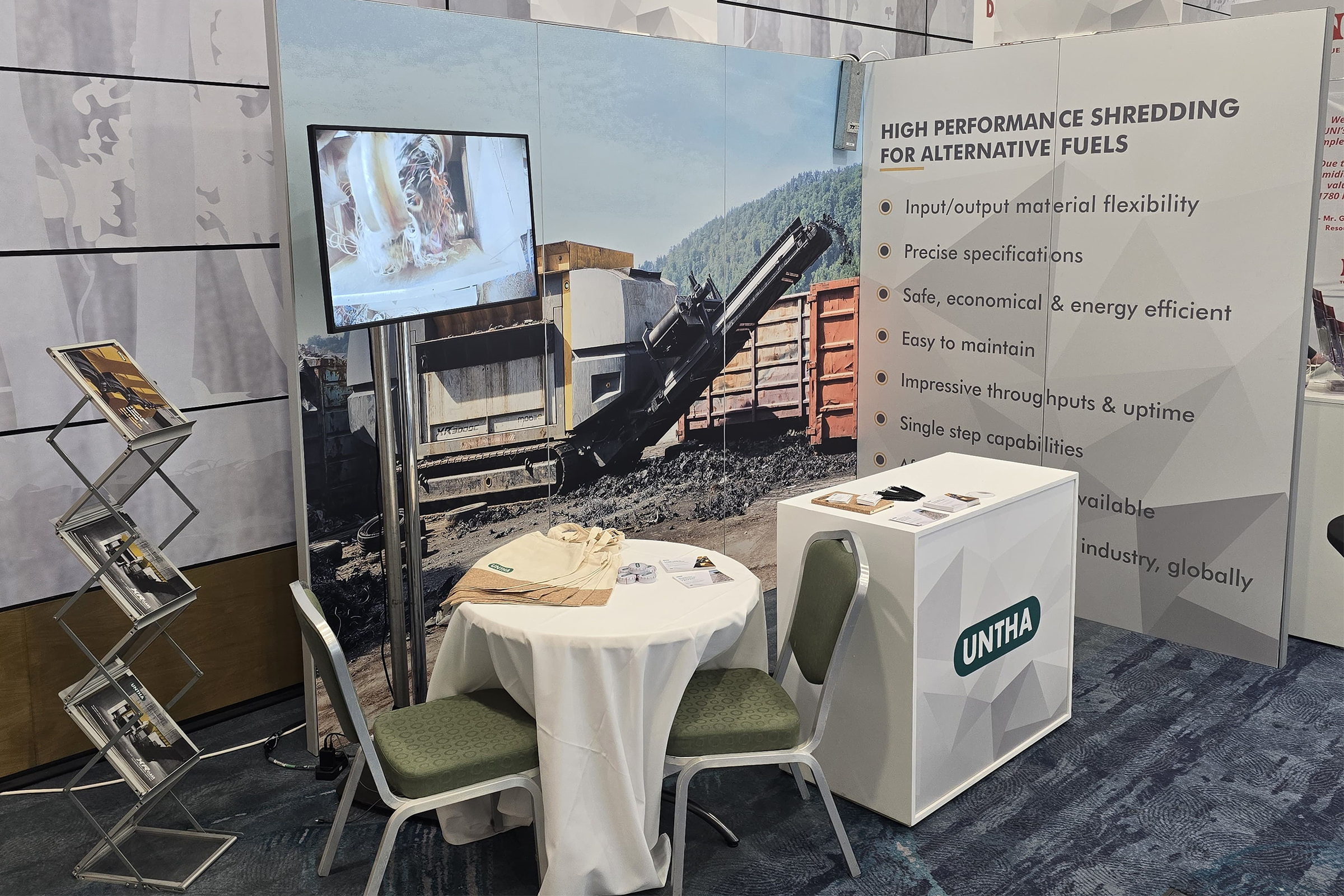Experienced industry leaders, honest conversations, and emerging technologies
Earlier this month, Dublin’s Crowne Plaza Hotel played host to the internationally renowned Global CemFuels conference and exhibition. Now in its 17th year, the highly regarded event saw 180 delegates from 33 countries come together to share their alternative fuel production knowledge.

With 22 seminars exploring everything from technological innovations to increasingly progressive decarbonisation strategies, the programme was rich in content and networking opportunities, for waste firms, equipment suppliers and cement manufacturers alike.
Here, UNTHA shredding technology’s global marketing director Katie Mallinson shares 10 takeaways from the two-day event:
1. The conference welcomed a mixture of experienced industry stalwarts and relative newcomers, with job roles ranging from process engineers and product designers, to plant managers and the most senior of C-suite positions.
Poignantly, one speaker drew attention to the fact that to drive continual innovation – against an often challenging market backdrop – we must all work together. It’s not the sole responsibility of any single stakeholder group. There is always work to be done to achieve progressive change, and collaboration is essential.
On that note, it was therefore great to hear conversations surrounding topics such as:
- optimal kiln setups for progressive alternative fuel substitution
- practical steps to take on the road to carbon net zero
- the role of electric driven shredding technology
- decarbonisation best practices.
2. There were a number of honest conversations about difficult economic conditions in certain parts of the world, which of course places additional external pressures on capital investments.
That said, engineering advancements now present a whole new world of potential, particularly in relation to input material flexibility, output fuel quality, reduced power consumption and whole life running costs. The business case for such capital investments therefore soon stacks up. In fact, in so many scenarios, alternative fuel projects don’t just drive societal and environmental progress – they can be highly profitable too.
3. Despite the mature knowledge base among a large proportion of the audience, a surprising number of people still don’t realise what is possible with only one waste shredder.
While a single-step alternative fuel production line is not appropriate for all material streams or fuel specifications, in many cases a resilient, versatile shredder can handle a wide variety of applications, and produce a homogenous fuel fraction. With simple reconfigurations, different output fuels can also be manufactured.
The benefits of purchasing, operating, and maintaining only one machine are of course vast. So, while single-step shredding is nothing new to UNTHA, we cannot stop talking about this topic.
4. There was a notable level of interest in emerging technologies, particularly from countries that already have a mature attitude to alternative fuel production.
One young business spoke of their AI-driven solutions to analyse material composition and the moisture content of fuel on the belt, for instance, while another vendor held the audience’s attention by showing what’s possible with auto feeding solutions. This appetite for innovation shows that even among experienced operators, there is still a hunger for continual improvements.
5. The ‘hydrogen hype’ was discussed a couple of times, but overall excitement levels still seem relatively low, given a number of challenges and limitations.
6. For the cement kilns more familiar with alternative fuel utilisation, the search for smaller particle sizes and a palletised product, certainly appears to be a 'hot topic'.
7. Tyres for TDF production is an extremely big topic, as we have found from our own shredder sales successes in recent years. A number of people commented that they didn’t realise tyres could be handled by one machine without any prior debeading.
8. Delegates of the Global CemFuels conference were the first to gain access to UNTHA’s new report – Alternative Fuel Production for the Cement Industry: A Global Study. Bringing together commentary, expertise and project spotlights from more than 40 different contributors, this authoritative resource explores alternative fuel trends and examples from Portugal, Poland, the UK, Türkiye, Austria, India, Vietnam, Brazil, Germany, the USA, and more.
9. When considering longer term waste to energy trends, one discussion considered the impact of rising segregation pressures, especially in countries with more advanced environmental agendas. If waste producers are forced to adopt more responsible segregation strategies, the composition of C&I waste will change.
It may take as long as a decade – perhaps more – but eventually the only residual C&I waste could be true non-recyclables. At this point, materials such as tyres, mattresses and carpets – currently considered a 'headache' to process by many – might actually be an alternative fuel 'favourite'. And why not? We know from firsthand experience that – thanks to slow speed, high torque shredding innovations – these difficult 'wastes' can actually be handled with relative ease.
10. Many naysayers may question the value of face-to-face events, particularly when travel is involved – and given the mass uptake of virtual conferences and video meetings, this is perhaps understandable. But visitors to UNTHA’s stand hailed from countries including Hungary, India, Türkiye, Hong Kong, Finland, Greece, Austria – and of course Ireland – to name just a few.
This diversity of overseas attendees – exploring a niche and complex subject such as alternative fuels – proves that well-organised events such as the Global CemFuels conference will continue to attract a crowd.